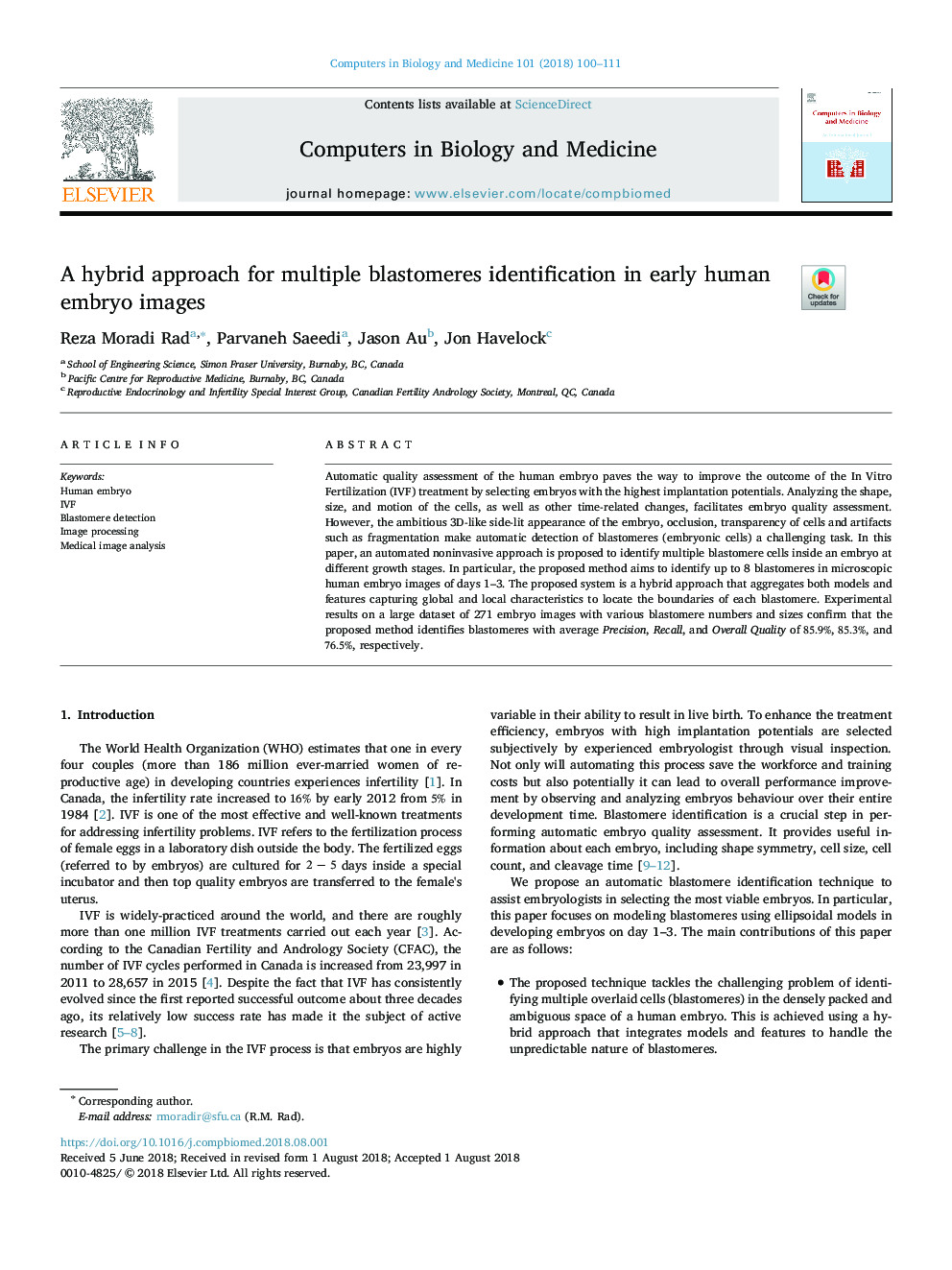| Article ID | Journal | Published Year | Pages | File Type |
|---|---|---|---|---|
| 6920385 | Computers in Biology and Medicine | 2018 | 12 Pages |
Abstract
Automatic quality assessment of the human embryo paves the way to improve the outcome of the In Vitro Fertilization (IVF) treatment by selecting embryos with the highest implantation potentials. Analyzing the shape, size, and motion of the cells, as well as other time-related changes, facilitates embryo quality assessment. However, the ambitious 3D-like side-lit appearance of the embryo, occlusion, transparency of cells and artifacts such as fragmentation make automatic detection of blastomeres (embryonic cells) a challenging task. In this paper, an automated noninvasive approach is proposed to identify multiple blastomere cells inside an embryo at different growth stages. In particular, the proposed method aims to identify up to 8 blastomeres in microscopic human embryo images of days 1-3. The proposed system is a hybrid approach that aggregates both models and features capturing global and local characteristics to locate the boundaries of each blastomere. Experimental results on a large dataset of 271 embryo images with various blastomere numbers and sizes confirm that the proposed method identifies blastomeres with average Precision, Recall, and Overall Quality of 85.9%, 85.3%, and 76.5%, respectively.
Related Topics
Physical Sciences and Engineering
Computer Science
Computer Science Applications
Authors
Reza Moradi Rad, Parvaneh Saeedi, Jason Au, Jon Havelock,
